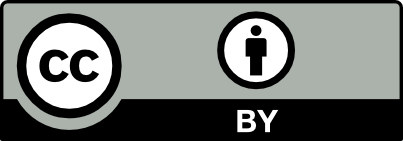Biomedical
Machine learning-mediated Passiflora caerulea callogenesis optimization
Peer Reviewed

Abstract
Callogenesis is one of the most powerful biotechnological approaches for in vitro secondary metabolite production and indirect organogenesis in Passiflora caerulea. Comprehensive knowledge of callogenesis and optimized protocol can be obtained by the application of a combination of machine learning (ML) and optimization algorithms. In the present investigation, the callogenesis responses (i.e., callogenesis rate and callus fresh weight) of P. caerulea were predicted based on different types and concentrations of plant growth regulators (PGRs) (i.e., 2,4-dichlorophenoxyacetic acid (2,4-D), 6-benzylaminopurine (BAP), 1-naphthaleneacetic acid (NAA), and indole-3-Butyric Acid (IBA)) as well as explant types (i.e., leaf, node, and internode) using multilayer perceptron (MLP). Moreover, the developed models were integrated into the genetic algorithm (GA) to optimize the concentration of PGRs and explant types for maximizing callogenesis responses. Furthermore, sensitivity analysis was conducted to assess the importance of each input variable on the callogenesis responses. The results showed that MLP had high predictive accuracy (R2 0.81) in both training and testing sets for modeling all studied parameters. Based on the results of the optimization process, the highest callogenesis rate (100%) would be obtained from the leaf explant cultured in the medium supplemented with 0.52 mg/L IBA plus 0.43 mg/L NAA plus 1.4 mg/L 2,4-D plus 0.2 mg/L BAP. The results of the sensitivity analysis showed the explant-dependent impact of the exogenous application of PGRs on callogenesis. Generally, the results showed that a combination of MLP and GA can display a forward-thinking aid to optimize and predict in vitro culture systems and consequentially cope with several challenges faced currently in Passiflora tissue culture.
Key Questions
1. What is the primary objective of the study?
The study aims to predict and optimize callogenesis responses in Passiflora caerulea by integrating multilayer perceptron (MLP) models with genetic algorithms (GA).
2. What methodology was employed in the research?
Researchers utilized MLP models to predict callogenesis rates and callus fresh weight based on various plant growth regulators (PGRs) and explant types. These models were then integrated with GA to optimize PGR concentrations and explant types for maximum callogenesis.
3. What were the main findings of the study?
The study found that MLP models demonstrated high predictive accuracy (R² > 0.81) for all parameters. Optimization results indicated that the highest callogenesis rate (100%) was achieved using specific combinations of PGR concentrations and explant types. Sensitivity analysis revealed that the impact of exogenous PGR application on callogenesis varied depending on the explant type.
Summary
Jafari and Daneshvar (2024) developed an integrated ML and optimization framework to enhance callogenesis in Passiflora caerulea. Their approach effectively predicted and optimized callogenesis responses, providing valuable insights for in vitro culture systems and secondary metabolite production.
Summary Video Not Available
ARTICLE USAGE
Article usage: Oct-2024 to Apr-2025
| Show by month | Manuscript | Video Summary |
|---|---|---|
| 2025 April | 57 | 57 |
| 2025 March | 73 | 73 |
| 2025 February | 43 | 43 |
| 2025 January | 49 | 49 |
| 2024 December | 47 | 47 |
| 2024 November | 49 | 49 |
| 2024 October | 28 | 28 |
| Total | 346 | 346 |
| Show by month | Manuscript | Video Summary |
|---|---|---|
| 2025 April | 57 | 57 |
| 2025 March | 73 | 73 |
| 2025 February | 43 | 43 |
| 2025 January | 49 | 49 |
| 2024 December | 47 | 47 |
| 2024 November | 49 | 49 |
| 2024 October | 28 | 28 |
| Total | 346 | 346 |


